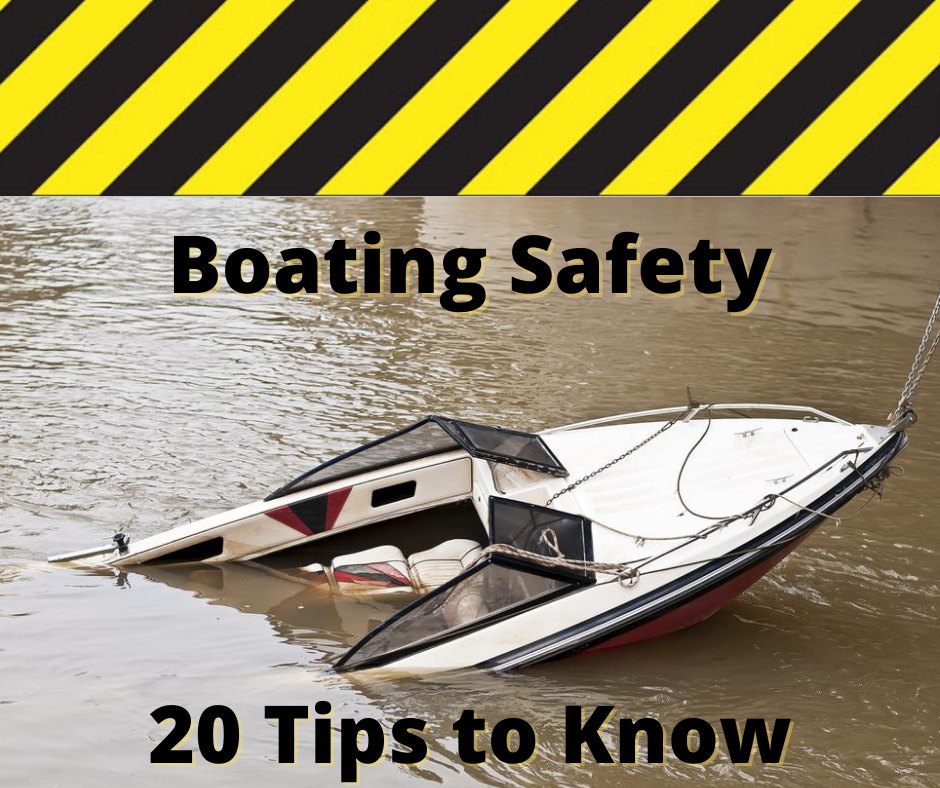Before you launch your boat this year, become familiar with these 20 Tips for Boating Safety. Take time to check all the necessary and important items you should have on board the boat before taking a group out on the water. Here are 20 Things to know before you go.
You can avoid potential danger and inconvenience during your outings. Also, most of the items are required by the Coast Guard or Lake Patrol Officers. You may be ticketed or refused an operational sticker if you do not meet safety standards.
1. The number 1 most important item is to make sure there is a life jacket for each person who will be riding in the boat. Make sure that they are the right size and fit for each passenger and that they wear them while on board!
2. Check that your boat has a throwable flotation ring or cushion and that it’s attached to a floating line.
3. Make sure your fire extinguisher is fully operational and mounted securely in a convenient place for quick access.
4. Have one or two devices for making a loud sound such as a whistle or air horn.
5. A visual distress signal that is approved by the USCG. There should be signals for day and night use, such as red hand held flares, red parachute flares or combination of smoke / flare signals. Non-pyrotechnic distress signals could be an orange distress flag or an electric distress light. The flag is for day use only and the electric distress light is for night and must automatically flash the international SOS signal.
6. Make sure the drain plug is installed and that it’s leak free.
7. The battery should be fully charged and secured with the terminals covered.
8. Have a manual bailing device or two that is easily accessible.
9. Two anchors with chain and line, one attached to the boat.
10. Paddles, oars, a sail or spare engine for back up in case the main motor becomes non functional.
11. A waterproof ditch bag with spare clothing, a tent or tarp for shelter, food and water.
12. Swim step or ladder for reboarding the boat easily.
13. Have a First Aid Kit and check to see that it is well supplied with items that you may need in case of injury.
14. Navigation tools like a GPS, charts or maps
15. Enough fuel and oil for the trip. Plan the trip so that you have some fuel to spare, just in case.
16. Test the engine(s) and insure that the cut-off cable or dead man switch is attached to the captain’s life vest.
17. Know the weather and water conditions for the area you will be boating.
18. Make sure that your passengers and supplies are distributed properly and do not overload your boat.
19. Brief your passengers on where and how to use the emergency equipment and communication equipment, if any. They should also know how to start, stop and steer the boat.
20. Prepare a float plan. This is similar to a pilots flight plan that tells where you are going, who is with you, what time you plan to return or check in. Give to a responsible person who is easy to reach. If you don’t check in or return at the specified time, they will alert authorities to begin a search for you.
You may also want to include some tools and spare parts such as spark plugs, prop and prop nut kit, shear pin, spare batteries and fuses.
Remember that drinking and boating are not a good mix! Don’t turn a day of fun into a day of disaster. Boat sober.







